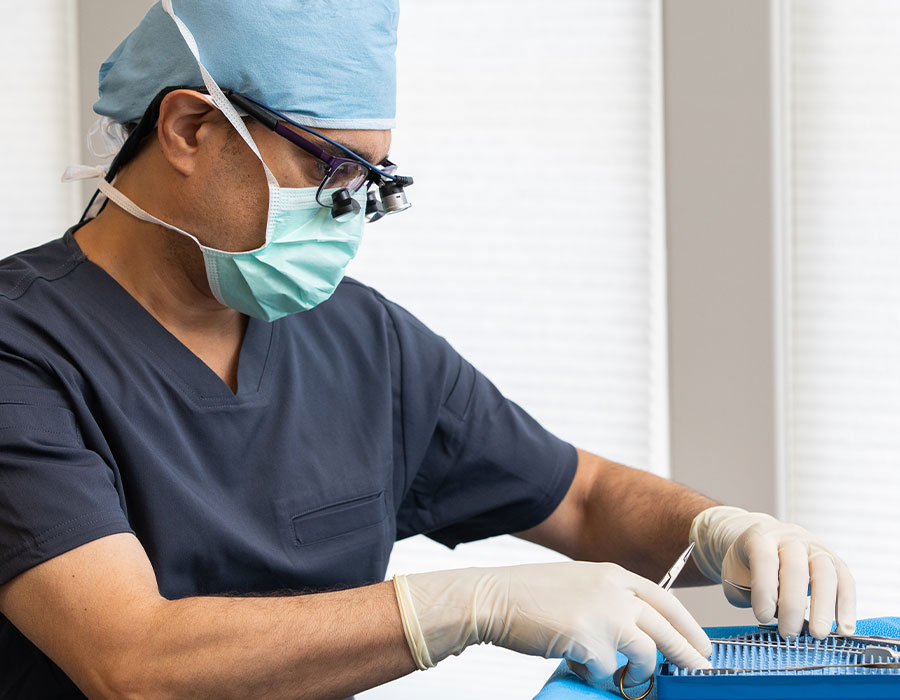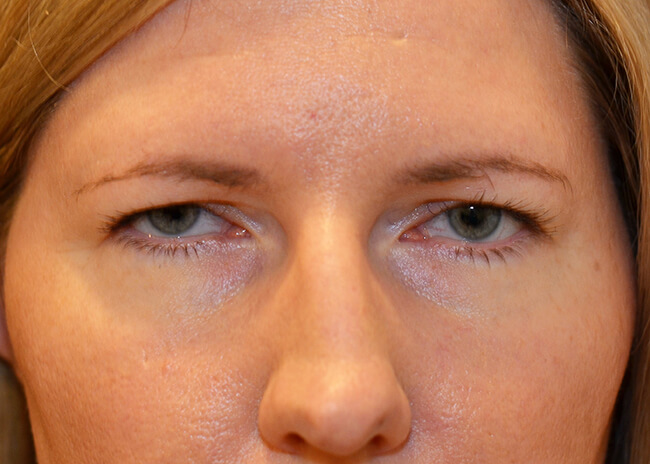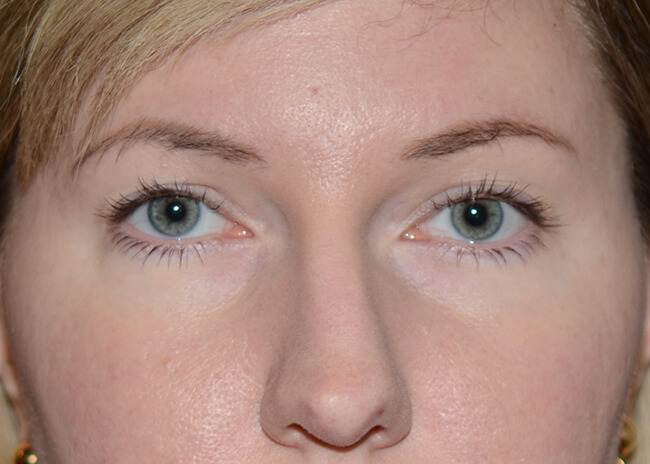Brow and Forehead Lift
Tightens and elevates, reducing sagging and wrinkles for a more youthful appearance.

Tightens and elevates, reducing sagging and wrinkles for a more youthful appearance.


Have you noticed your eyebrows beginning to droop? Or perhaps horizontal lines and furrows in your forehead? Trust us, you’re not the only one!
The natural eyebrow position changes with age due to the effects of gravity, loss of tissue elasticity and tone, fat atrophy, and continuous eyebrow and forehead muscle use over time. Additionally, as the eyebrows naturally shift, crowding can occur and droopy skin can also interfere with vision.
While aging is an honor, none of these are desirable outcomes and can make one look perpetually angry, sad, or tired often resulting in mixed messages through unintended facial expressions.
Luckily, a brow or forehead lift can help abate these natural yet unwelcome signs of aging by smoothing out the furrows and lines of the forehead and opening up the eyes–all without requiring a complete facelift. A brow or forehead lift is also beneficial to those whose vision has been hindered by eyebrow ptosis, improving quality of life.
“Brow lift” and “forehead lift” are terms that are often used interchangeably to refer to a procedure in which the skin on the forehead is raised, smoothing out creases and lines, correcting drooping brows and improving frown lines.
There are several methods of brow or forehead lift, depending on the severity of your symptoms and desired end result. You and Dr. Amadi will discuss your beauty goals at your consultation and decide which route is best for you.
A trichophytic brow lift is done by making an incision 3 to 4 millimeters behind the hairline, elevating the soft tissues of the forehead and brow, and then raising the brows to the desired, but NATURAL, height, and draping the forehead upward thus smoothing it out. The incision is made in a beveled fashion, preserving the hair follicles, so when the forehead is elevated and excess non-hair bearing skin is removed, the incision is closed in a way that allows the hair to grow through the scar. This ensures that the resulting scar is hidden by the hairline, making it virtually undetectable. This method is often used on patients who have have a high hairline so as not to create an overly large forehead. In fact, this type of brow lift can be combined with “forehead reduction” surgery where we can, in fact, lower the hairline by up to 2-3 cm!
Though the Trichophytic Brow Lift requires a longer incision along the hairline, Dr. Amadi feels that this gives the most powerful and long lasting lift with an aesthetically “friendly” incision. It is also more versatile to allow better opportunity to improve asymmetry, and as mentioned above, it will preserve your hairline, or even lower it!.
Two similar procedures are the “pretrichial (hairline)” brow/forehead lift and the coronal brow lift. The petrichial brow lift is done by making an incision in front of the hairline, lifting the skin and muscles upward and removing a strip of skin and underlying tissue at the incision. The results are very similar to those of the trichopytic lift, however the scar is much more visible due to the fact that there is no hair growing through the incision to hide it. With the coronal lift, the incision is made from ear to ear, much higher, at the crown of the head. The scar from a coronal lift will be easily masked as the incision is made well into the hair, but more than any other brow lift technique, the coronal brow lift will raise the hairline and the height of the forehead, which is not usually desired. For this reason, Dr. Amadi does not utilize either of these techniques.
A trichophytic brow lift is Dr. Amadi’s preferred technique due to its longevity and versatility: it can provide more dramatic results if desired, allows for better opportunity to improve brow asymmetry, and not only preserves the natural position of the hairline, but, if needed, can also provide an opportunity to lower the hairline while shortening the height of the forehead.
Recovery time may vary, but patients can usually return to normal activity within two weeks of surgery.
Another popular method of brow lift, the endoscopic brow lift, is done by making anywhere from three to five small incisions just behind the hairline. With the aid of a camera (endoscope) for visualization of important nerves and blood vessels, the soft tissue of the brow and forehead is released from the underlying bone, redraped upward and then secured to the underlying bone with sutures, screws or staples. Because the incisions are made behind the hairline, scars will be virtually invisible.
An endoscopic brow lift can smooth out the forehead while lifting the eyebrow area which “opens up” the eyes and upper face. Eyebrow shape and asymmetry can sometimes be addressed with this type of lift, but not as predictably as with the trichophytic brow lift. An endoscopic brow lift can lift the eyebrows quite nicely, but an unwanted side effect is raising of the hairline which is why Dr. Amadi is very judicious with patient selection for this technique–he does not recommend this technique for patients with a long forehead (high hairline).
This type of lift may also not be ideal for someone with severe brow descent or heavy skin, and may not be as long lasting as the trichophytic method.
As the name suggests, the incision in a temporal brow lift is made in the temple region, just 1-2 cm behind the temporal hairline to hide the incision. This is a less invasive brow lifting technique that only addresses the outer aspect of the eyebrows to create a nice arch and improve the lateral hooding of the eyes. It is often done in combination with eyelid surgery (brow lifting) under local anesthesia to open up the eyes and improve the arch of the eyebrow.
The downside of this technique is that it doesn’t give as long lasting results as the trichophytic approach, but has the benefit of being less invasive and can be done under local anesthesia with an undetectable scar which is hidden by hair completely.
Also known as a “gull wing” lift, this type of brow lift is done by making two incisions just above the eyebrows and removing a section of skin from above the eyes or mid forehead. This procedure is best suited for those with severe forehead wrinkles that hide the incision scar and for patients with a thinning hairline that is insufficient for other types of lifts. After the ellipse of skin is removed, the incision is closed in multiple layers to ensure minimal scar visibility; this results in raising the eyebrows and smoothing out skin. This method also shortens the forehead, thus making it a suitable procedure for those with receding hairlines.
This type of lift is also excellent at addressing brow shape and symmetry. The drawback is a scar, which although well positioned in skin creases, can take several weeks/months to fade.
Because some conditions addressed by a brow lift are genetic–such as a low, heavy brow or furrowed lines above the nose–and not age related, candidates can be healthy persons of any age.
If you have one or more of the following conditions present, you could be eligible for a brow or forehead lift:
Depending on which method you and your surgeon decide is best for your procedure, your surgery will take between one to two hours. You will see results immediately post-operation and for the first few weeks you may look a little surprised, however, the eyebrows will settle into a more natural position as healing progresses and the swelling subsides. Swelling can take a few weeks and up to six months to go down completely and your final results will continue to develop over this time.
Recovery from any time of brow lift can vary from patient to patient, relying on a number of factors (i.e. health, the speed at which an individual heals, what type of lift the patient had etc.) however, most patients experience some bruising and swelling post operation and are usually comfortable returning to their normal routine activities in about 1- 2 weeks.
Because aging is a continuous process, results from a brow lift will not be permanent, but they will be long-lasting–results from some methods more than others. On average, results last between 10-12 years with trichophytic brow lifts and 5-10 years for endoscopic brow lifts, and 3-5 years with temporal brow lifts, with some patients enjoying longer results. In order to prolong the results of your procedure and to slow down the effects of aging, it is recommended that you always wear SPF, use proper skin care and periodically have cosmetic treatments such as chemical peels, BOTOX, microneedling and Ultherapy to stimulate collagen growth and freshen up your skin.

Team
Focusing on a natural and age-appropriate look, Dr. Amadi will deliver the finest personalized care, giving you the results you desire.
Meet Dr. AmadiBefore & After
Raising the eyebrows will smooth out the forehead while opening up your eyes.
View the gallery

